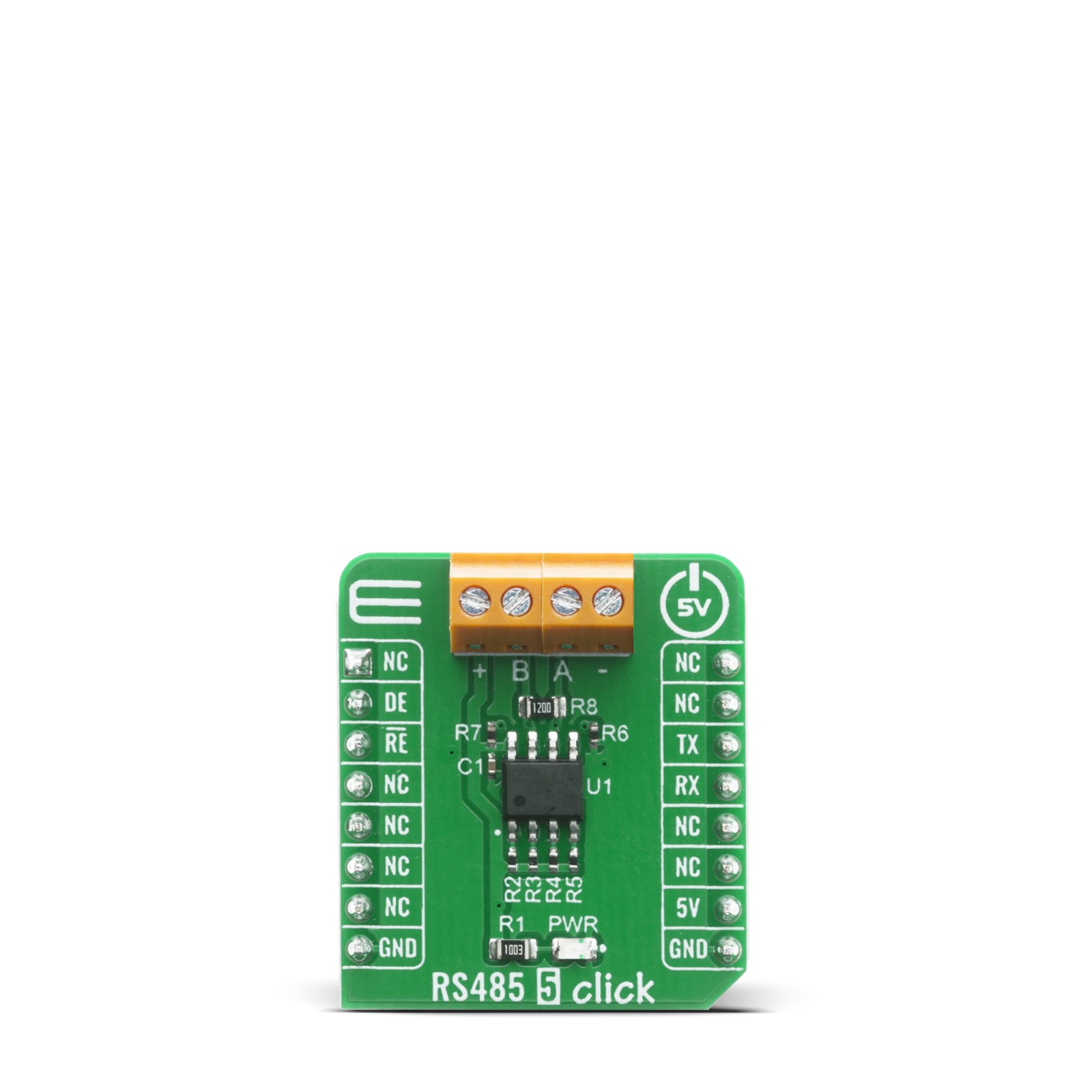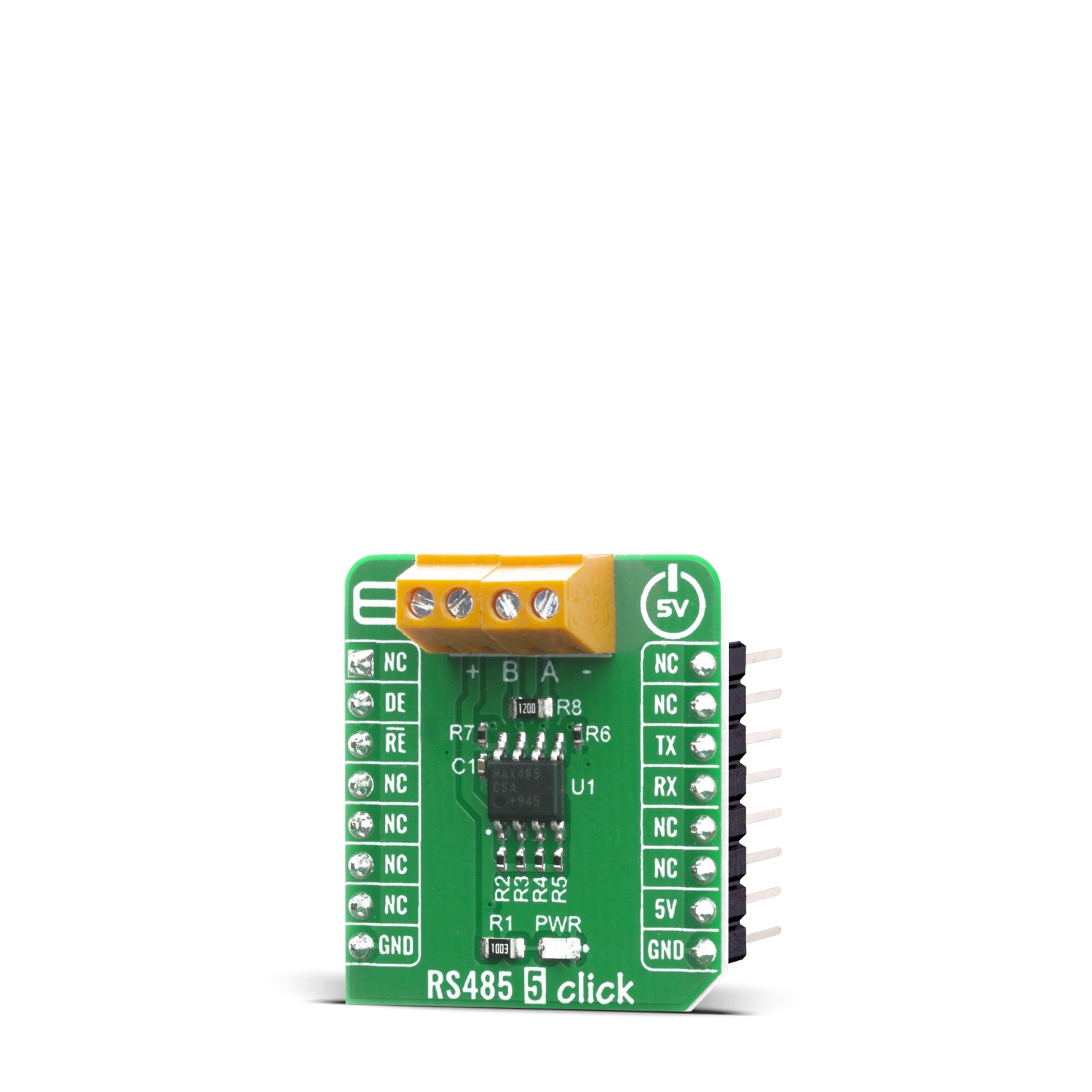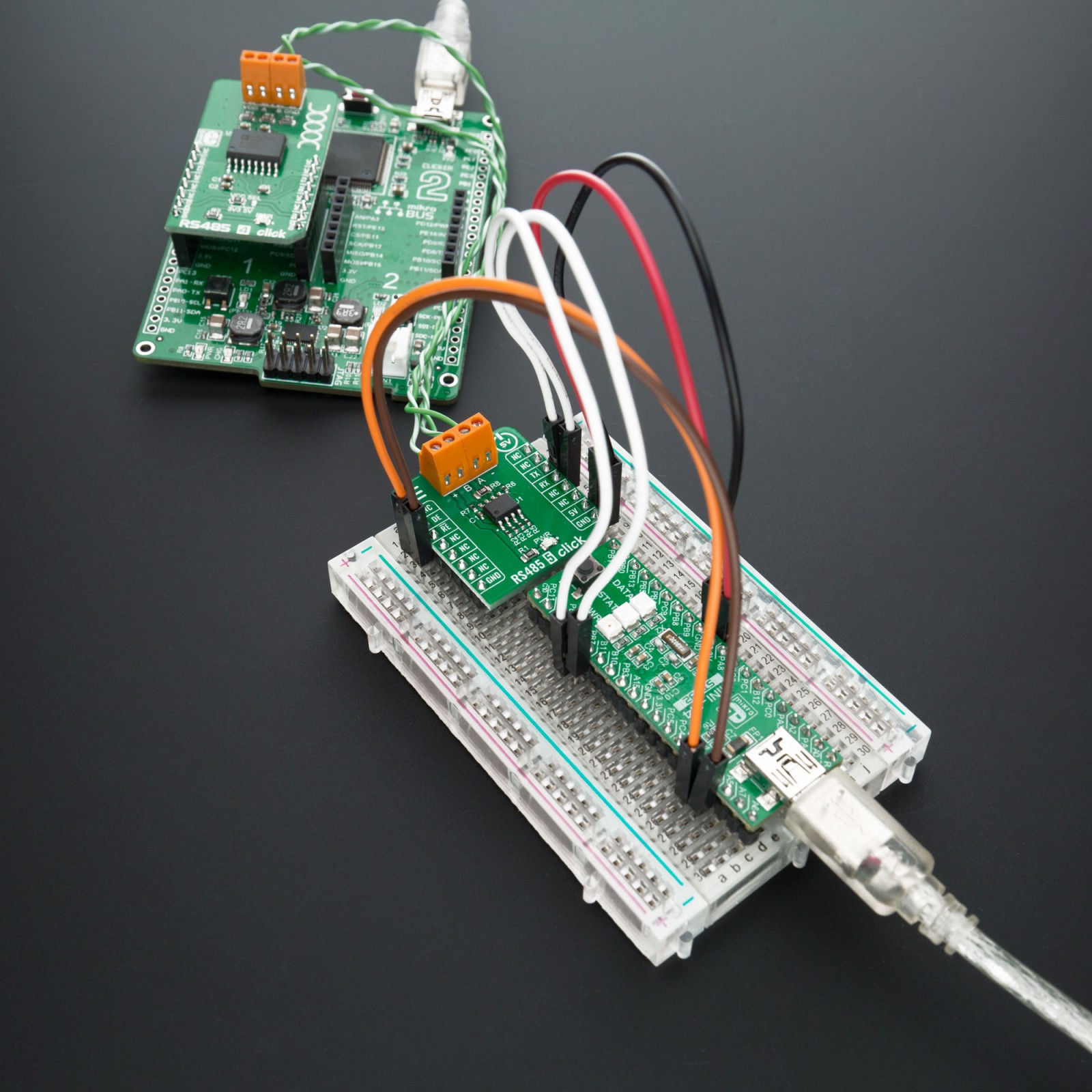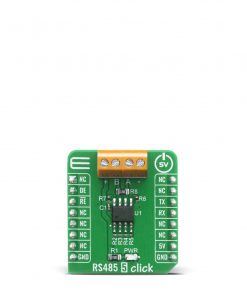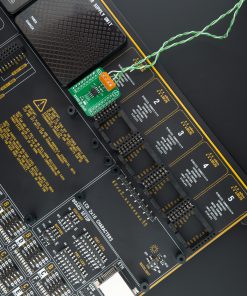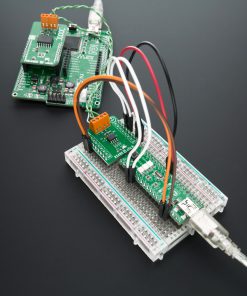RS485 5 Click
R350.00 ex. VAT
The RS485 5 Click is a Click board™ equipped with the MAX485, low-power, slew-rate-limited transceiver for RS-485 and RS-422 communication, from Analog Devices. This device supports half-duplex RS-485 communication and can be used as an interface between the TTL level UART and the RS485 communication bus. Thanks to the low power consumption and reduced slew-rate drivers that minimize EMI and reduce reflections caused by improperly terminated cables, error-free data transmission up to 250kbps is suported. RS485 5 Click is perfectly suitable for EMI-Sensitive Applications, such as industrial-control local area networks, building automation, HVAC systems, and many more.
RS485 5 Click is supported by a mikroSDK compliant library, which includes functions that simplify software development. This Click board™ comes as a fully tested product, ready to be used on a system equipped with the mikroBUS™ socket.
Stock: Lead-time applicable.
| 5+ | R332.50 |
| 10+ | R315.00 |
| 15+ | R297.50 |
| 20+ | R286.30 |

